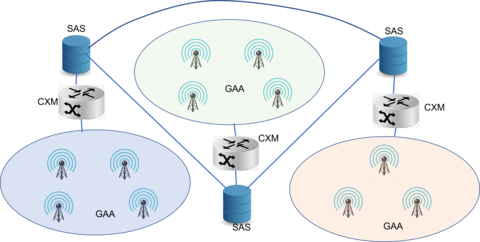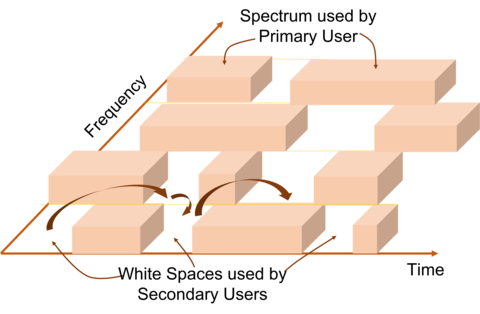GAA Coexistence and Dynamic Spectrum Access
GAA Coexistence and Dynamic Spectrum Access
NIST has been engaged in the study of coexistence of the General Authorized Access (GAA) users in the Citizens Broadband Radio Service (CBRS) band. GAA users are the lowest priority users in the CBRS band. They must make sure that they do not cause harmful interference to the higher tier users while cooperating with each other to minimize potential interference among themselves. Towards this goal, the Wireless Innovation Forum (WInnForum) has recommended three schemes to facilitate GAA-GAA coexistence. NIST has published simulation based performance studies of two of these schemes that use real terrain and land cover data of continental USA.

NIST has studied dynamic spectrum access (DSA) for secondary users to exploit white spaces in LTE system. DSA algorithms based on Survival Analysis, that maximize white space utilization while limiting the interference to the primary user below a set threshold, have been designed for LTE systems. Real world LTE spectrum occupancy data were used to validate performance of the algorithms. Analytical model of white space utilization of a DSA system has also been carried out by applying theories from survival analysis and stochastic processes. Preliminary study based on machine learning using real-world LTE data for DSA also has been performed.

More details about GAA coexistence and DSA can be found in the references below:
- Performance Impact of Coexistence Groups in a GAA-GAA Coexistence Scheme in the CBRS Band (TCCN 2020)
- GAA-GAA Coexistence in the CBRS Band: Performance Evaluation of Approach 3 (IEEE LCN 2020)
- Performance Study of a GAA-GAA Coexistence Scheme in the CBRS Band (DySPAN 2019)
- A Machine Learning Based Scheme for Dynamic Spectrum Access (WCNC 2021)
- Optimal Dynamic Spectrum Access Scheme for Utilizing White Space in LTE Systems (WCNC 2019)
- Analytical Modeling of White Space Utilization for a Dynamic Spectrum Access System (WCNC 2019)
- Exploiting LTE White Space using Dynamic Spectrum Access Algorithms based on Survival Analysis (ICC 2017)
- Dynamic Spectrum Access Algorithms Based on Survival Analysis (TCCN 2017)
Contacts
RADIO ACCESS AND PROPAGATION METROLOGY GROUP
-
(301) 975-4190
-
(301) 975-6194
-
(301) 975-8617
-
(301) 975-4439

